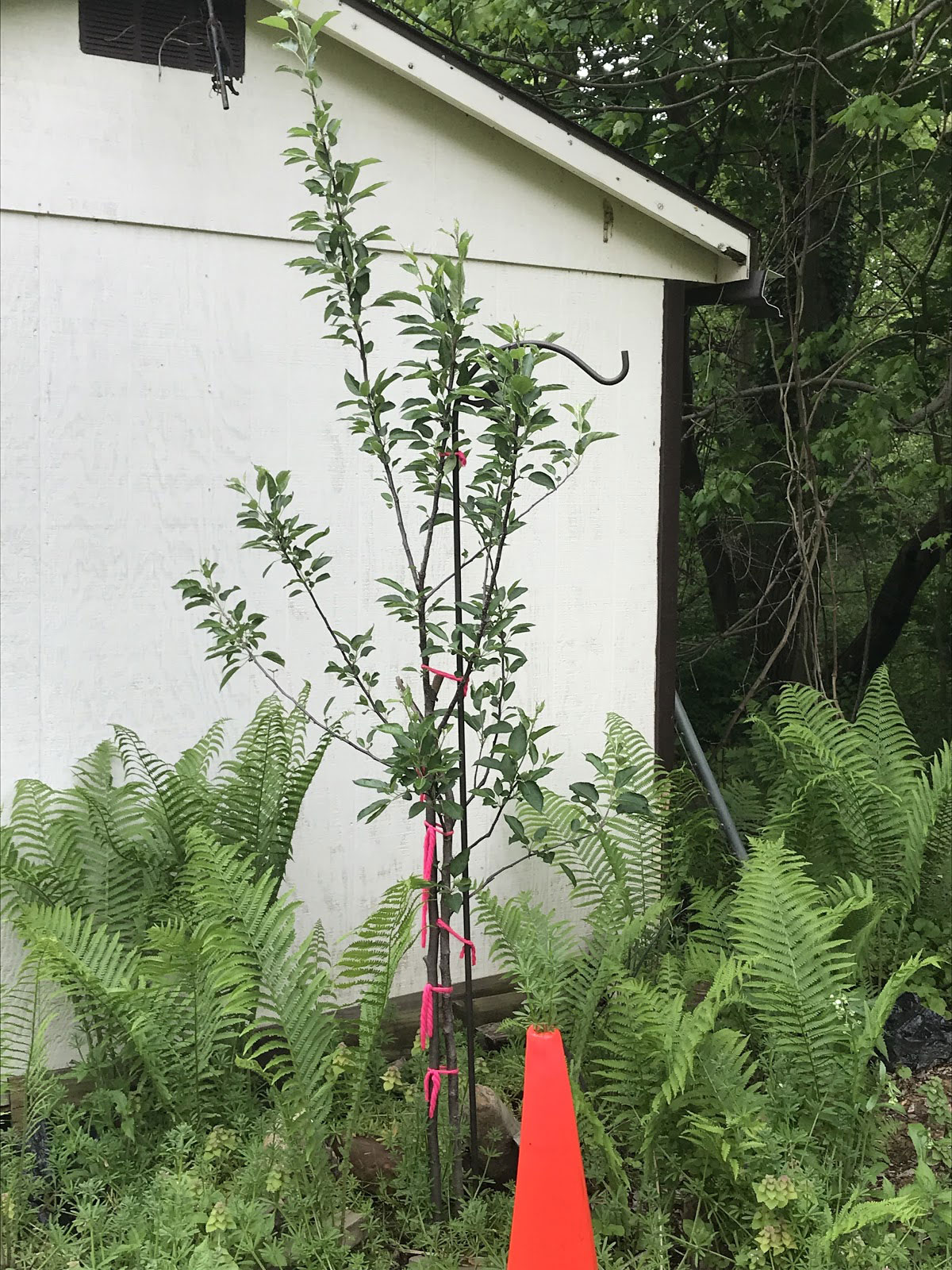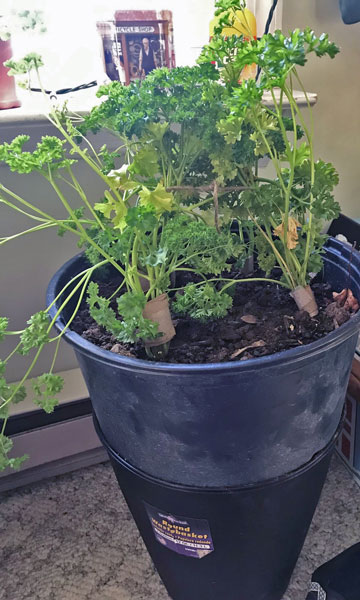by Ana Morlier, The Crazy Plant Lady
Fruiting Shade Trees
Happy June, everyone! I know that I will really start celebrating the month after this crazy school year ends. Crops are thriving. Vacations are beginning. However, one drawback to this awesome month is the beginning of the HEAT. To think that I hovered near any available heat source like a mayfly only a couple of months ago makes me laugh, then sweat. I will soon cling to fans and turn the house into an arctic tundra.
Being a gardener, we can only stay in cool areas for so long—the plants need tending to! One can definitely take preventative measures against the upcoming summer heat by drinking plenty of (cold) water, taking breaks, and wearing a hat. If you have a pool to cool off with, even better! However, not all of us are lucky enough to have the right conditions for a pool (we have too much wildlife eager to destroy the watery refuge). I present to you a solution that will yield produce and give you relief from the heat: shade trees! And, not just any shade trees: FRUITING shade trees! I was pretty surprised that fruit trees could check off both requirements, which made a great combination.
Apple trees are some of the best shade trees. Ap-peal-ing options include:
Early harvest apple (as the name suggests, some yield fruit as early as June! Even if it’s not early, you can enjoy the juicy, tart apple at the end of September at the latest).
Red Delicious Apple (a pretty famous apple variety—great for applesauce; harvest in fall).
Yellow Delicious Apple (IMPORTANT to cross with other tree varieties such as red delicious or red Jonathan; great for pies!).
These apple varieties grow pretty quickly—an added bonus.
Here are some other fruits that apri-caught my eye:
Apricot trees are surprisingly tolerant of cold. They are also self-fertile, but it’s a pretty good idea to plant another variety of apricot nearby (more produce).
The early golden apricot can produce fruit as early as July or August. The fruit is great for fresh eating, baking, canning, or drying.
The Moorpark Apricot is pretty much the same, except for the fact that the fruits ripen at different times. To make up for this fact, it has beautiful white-pink flowers that bloom in spring—a little late, I know, but I couldn’t leave out this fact!
Still not pear-y happy with apricots or apples? Pear-haps you should try pears!
Bartlett pear trees are rumored to be pretty easy to grow, producing fruit in late summer. They also have blooms in spring.
The Harvest Queen pear is even more pear-fect because it yields produce earlier than that of the Bartlett pears and is resistant to blight! Another variety of pear tree is needed in order for it to produce fruit.
I hope these shady (not sketchy) trees become the apple of your eye and provide you with a cool haven with lots of tasty produce!
*Credit to Arbor Day Foundation, Specialty Produce, Davey Tree Expert Company, North Carolina Extension Gardener Plant Toolbox, Shari’s Berries, Punopedia, Punstoppable, Best Puns.

My own Liberty apple tree (one of two). Even though it wasn’t mentioned in the article, I wanted to illustrate how fast a young sap could grow! In the fall, it was half the size and close to death. Liberty apple is one of the best disease-resistant varieties and is great for eating fresh and baking. Liberty ripens in mid-to-late September and stores well until January.




